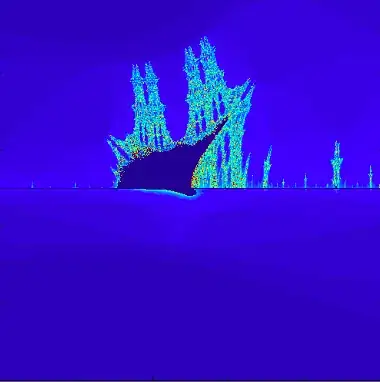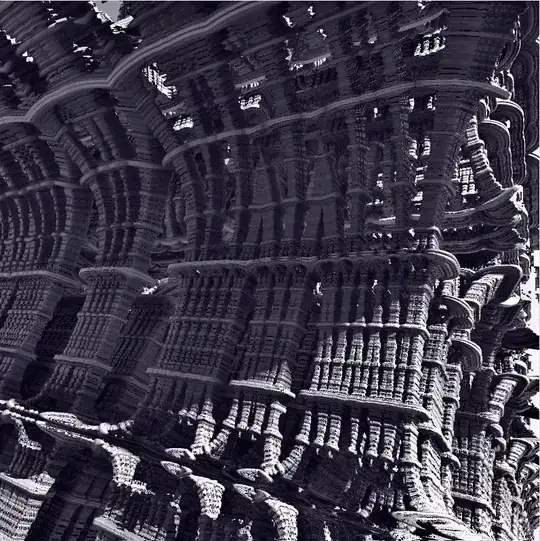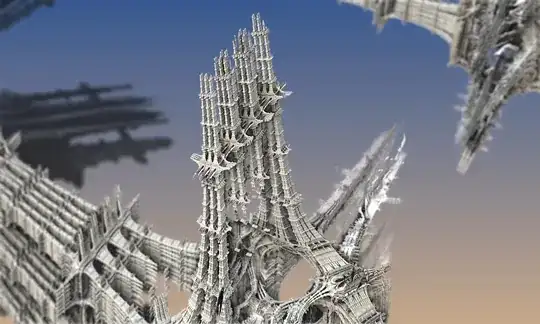Fractal images from the Mandelbrot set are well known. Plots of the Burning Ship fractal are a bit lesser known but this answer discusses these and others. They can be viewed by iterating the following on the complex plane and recording the value of the index $n$ for the last iteration that each original point remained below some "escape condition".
I've shown some simple representation of the Burning Ship "interesting area" below.
Recently I found some YouTube videos and blogs showing renderings of the "3D Burning Ship Fractal". Many of these are done using software packages for people who just want to make fractal images. There is some discussion and some examples of this in this blog. Also for background a video including the "great explainer" Arthur C. Clarke can be found here.
Question: What are "3D Burning Ship fractals"? Are they mostly the result of graphics techniques to make interesting looking things, or is this something of substantial academic interest. Since the complex pane is 2D, I have a hunch this is more "art" than a mathematical research field, but I don't know.
Mandelbrot: $ \ \ z_{n+1} = z_n^2 + c$
Burning Ship: $ \ \ z_{n+1} = \left( \lvert Re(z_n) \rvert + i\lvert Im(z_n) \rvert \right)^2 + c$
above: Burning Ship, $-3, -2i$ to $1, 2i$
above: Burning Ship, $-1.85, -0.1i$ to $-1.65, 0.1i$ The "Radio Towers" above this and other nearby ships are generally the source of the most popular fractal image generation.
A Fractal Zoom Video of the Burning Ship: https://www.youtube.com/watch?v=CD9yNFmb2FE
A video of a "3D Burning Ship Fractal": https://www.youtube.com/watch?v=yaPTk-DqT1g
above x2: Burning Ship "3D Fractals" from here.




dynamical-systemstag should be removed though? – uhoh Jun 14 '17 at 17:49